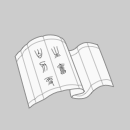
机械原理
全新正版 极速发货
¥ 38.69 6.7折 ¥ 58 全新
库存4件
广东广州
认证卖家担保交易快速发货售后保障
作者梁医,宋梅利,祖莉 主编
出版社北京航空航天大学出版社
ISBN9787512413962
出版时间2015-11
装帧平装
开本16开
定价58元
货号1201259718
上书时间2024-08-08
- 最新上架
商品详情
- 品相描述:全新
- 商品描述
-
目录
Chapter 1 Introduction
1.1 Concept of Mechanisms and Machines
1.2 Study Content of This Course
1.3 Purpose of This Course
Bibliography and References
Internet Resources
Problems
Project
Chapter 2 Structural Analysis of Planar Mechanisms
2.1 Planar Kinematic Pairs and Planar Mechanisms
2.2 The Kinematic Diagram of a Mechanism
2.3 The Degree of Freedom of a Mechanism
2.4 Conditions for a Mechanism to Have a Determined Motion
Bibliography and References
Internet Resources
Problems
Projects
Chapter 3 Kinematic Analysis of Planar Mechanisms
3.1 Purpose and Methods of Kinematic Analysis
3.2 Velocity analysis by the Method of Instant Center
3.3 Relative Motion Graphical Method
3.4 Kinematic Analysis by Analytical Method
Bibliography and References
Internet Resources
Problems
Projects
Chapter 4 Planar Linkage Mechanisms
4.1 Introduction
4.2 The Types and Variations of Four—bar Linkages
4.3 Characteristics Analysis of Four—bar Linkages
4.4 Graphical Dimensional Synthesis of Four—bar Linkages
Bibliography and References
Internet Resources
Problems
Projects
Chapter 5 Cam Mechanisms
5.1 The Characteristics and Classification of Cam Mechanisms
5.2 Follower Motion Curves in Common Use
5.3 Graphical Synthesis of Cam Profile
5.4 Analytical Synthesis of Cam Profile
5.5 The Sizes and Physical Characteristics of Cam Mechanism
Bibliography and References
Internet Resources
Problems
Project
Chapter 6 Gear Mechanisms
6.1 Introduction
6.2 Fundamental Law of Gearing
6.3 The Involute and Its Properties
6.4 Standard Involute Spur Gears
6.5 Gearing of Involute Spur Gears
6.6 Gear Manufacture
6.7 Nonstandard Gears
6.8 Helical Gears on Parallel Shafts
6.9 Helical Gears on Crossed Shafts
6.10 Worm Gears
6.11 Bevel Gears
Bibliography and References
Internet Resources
Problems
Projects
Chapter 7 Gear Trains
7.1 Types of Gear Trains
7.2 Velocity Ratios for Ordinary Gear Trains
7.3 Velocity Ratios for Epicyclic Gear Trains
7.4 Velocity Ratios for Combined Gear Trains
7.5 Efficiency of Planetary Gear Trains
7.6 Design of Planetary Gear Trains
Bibliography and References
Problems
Projects
Chapter 8 Other Mechanisms in Common Use
8.1 Universal Joint Mechanism
8.2 Screw Mechanism
8.3 Ratchet Mechanism
8.4 Geneva Mechanism
8.5 Intermittent Gear Mehchsnism
Bibliography and References
Problems
Chapter 9 Dynamic Analysis of Planar Mechanisms
9.1 Introduction
9.2 Friction in Kinematic Pairs
9.3 D’Alembert’S Principle and Dynamic Analysis
9.4 Velocity Polygon Lever Method
9.5 Mechanical Efficiency and Self—locking
Bibliography and References
Internet Resources
Problems
Projects
Chapter 10 The Kinetic Theory of Mechanical System
10.1 Introduction
10.2 Dynamic Analysis Equation of a Mechanical System
10.3 Solution of the Kinetic Equation
1O.4 Periodic Fluctuation of Speed of Machinery and Flywheels
Bibliography and References
Problems
Projects
Chapter 11 Balancing of Machinery
11.1 Introduction
11.2 Static Balancing of Rigid Rotors
11.3 Dynamic Balancing of Rigid Rotors
11.4 Banlancing of Planar Mechanisms
Bibliography and References
Problems
Glossary and Index
内容摘要
This textbook is written according tO The Basic Teaching Requirements for the Course of Mechanisms and Machine Theory in Advanced Industrial Colleges drawn up by the National Ministry of Education.It is designed tO be used at the undergraduate level in a basic course of machine design. There are eleven chapters in this book. Its coverage includes introduction, structural analysis and kinematic analysis of planar mechanisms,planar linkage mechanisms,cam mechanisms,gear mechanisms ,gear trains,other mechanisms in common use,dynamic analysis of planar mechanisms, the kinetic theory of mechanical system and balancing of machinery.Homework problems involving design and analysis provide a basis for the curse to follow.At the end, the text is supplemented by a glossary of terms. 梁医、宋梅利、祖莉编写的《机械原理(英文版 工业和信息化部十二五规划教材)》 can be used as a textbook for the course of Mechanisms and Machine Theory or a reference for the students,teachers and engineers speizing in mechanical engineering.
— 没有更多了 —












以下为对购买帮助不大的评价